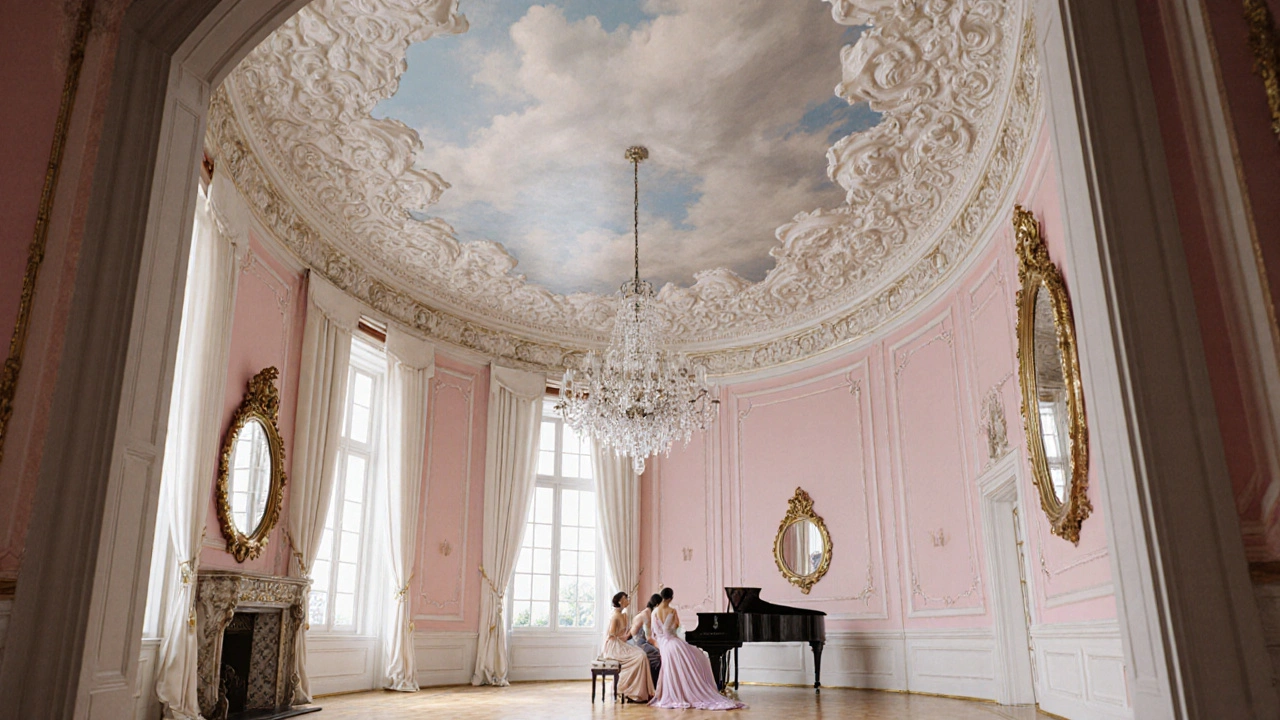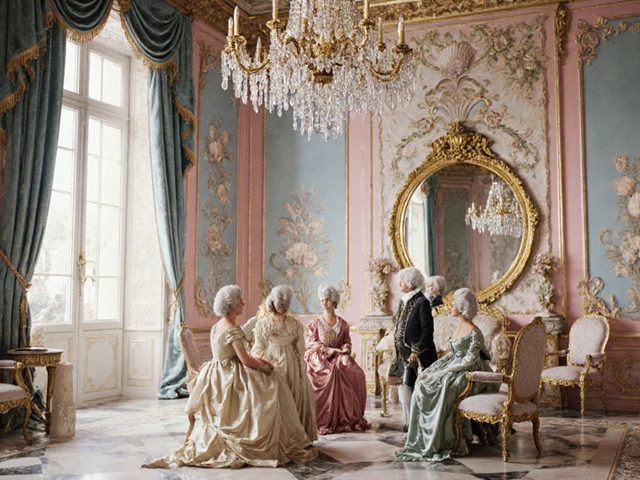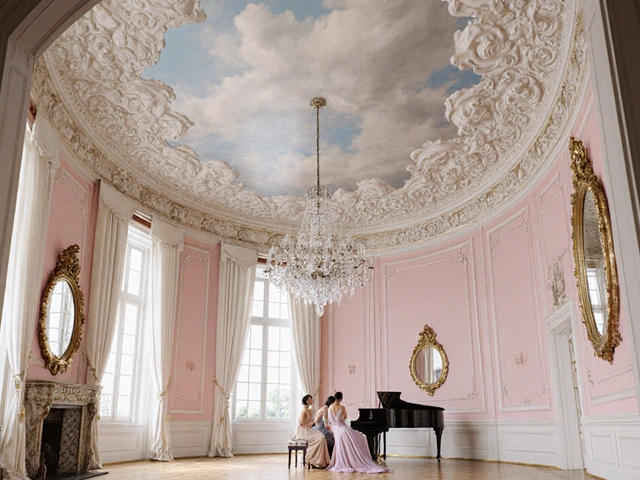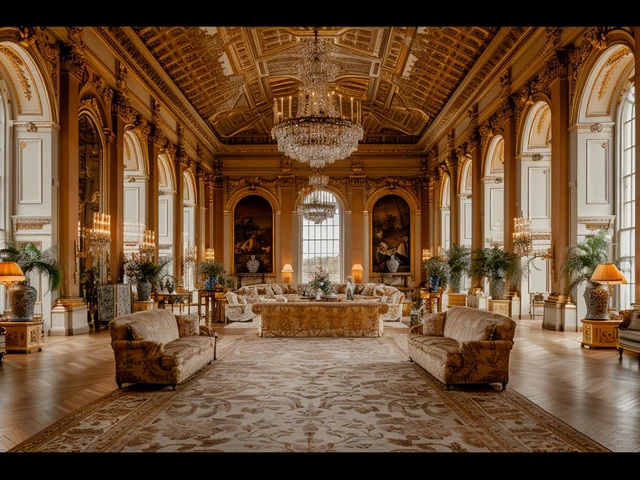Rococo Style Identifier
Test Your Rococo Knowledge
Answer the following questions to see if you can spot Rococo elements and understand its key characteristics.
Your Results
Rococo celebrated intimacy, playfulness, and decorative excess, contrasting sharply with the formal grandeur of Baroque. It influenced everything from interior design to fashion, and continues to inspire modern aesthetics.
Key elements include:
- Soft pastel colors
- Curved lines and asymmetry
- Playful subjects (mythology, romance)
- Gilded decorations
- Intimate, flowing spaces
Ever walked into a room and felt like you’d stepped into a pastel dream? That swooping, playful vibe is the hallmark of Rococo. Born in early 18th‑century France, Rococo turned the grandeur of Baroque on its head, swapping heavy drama for lightness, symmetry for whimsical asymmetry, and dark palettes for soft pastels. This article untangles what Rococo really means, why it mattered, and how its ideas still pop up around us today.
What Is Rococo?
Rococo is a decorative style that emerged in the early 1700s, primarily in France, and spread across Europe. It is characterized by elaborate ornamentation, curving forms, pastel colors, and a playful approach to themes such as love, nature, and leisure. Unlike the solemn grandeur of the preceding Baroque, Rococo celebrates intimacy and everyday pleasure.
Origins: From Baroque to Rococo
The shift began under Louis XV, whose court favored elegance over the militaristic swagger of his predecessor. Architects and designers started to replace the stark, axial layouts of Baroque palaces with rooms that flowed into one another, creating a sense of continuous movement.
Key influences included:
- Italian carnival motifs that favored light-hearted scenes.
- Japanese and Chinese imports (the so‑called Chinoiserie) that introduced exotic patterns.
- The rise of the Enlightenment, which encouraged personal enjoyment and the pursuit of beauty for its own sake.
Core Aesthetic Elements
Spot a Rococo piece and you’ll likely notice these visual shortcuts:
- Curved lines: S‑shaped scrolls, shells, and vines dominate surfaces.
- Pastel palette: Soft pinks, blues, and creams replace the deep reds and golds of Baroque.
- Asymmetry: Designs feel balanced without being perfectly mirrored.
- Playful subject matter: Scenes of flirtation, garden parties, and mythological love stories.
- Gilded details: Gold leaf adds sparkle without overwhelming the light tones.
These tricks work together to create a space that feels airy, intimate, and endlessly decorative.
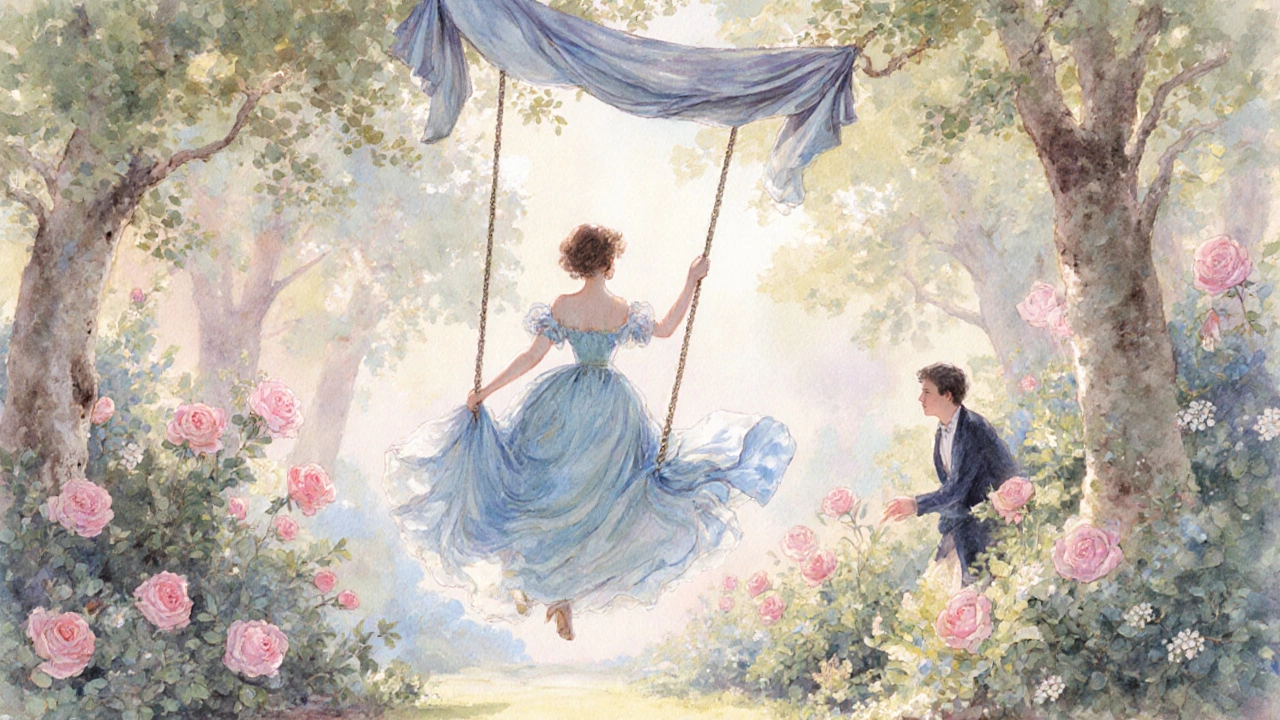
Iconic Artists and Architects
Several creative giants defined Rococo’s look. Their names are worth memorizing if you want to identify the style on sight.
- François Boucher was a French painter famous for sugary mythological scenes, often featuring nymphs and playful cherubs.
- Jean‑Honoré Fragonard captured fleeting romantic moments with loose brushwork and bright colors, exemplified in "The Swing".
- Johann Balthasar Neumann, a German architect, took Rococo into the realm of grand churches, most famously the Würzburg Residence with its soaring staircases and frescoed ceilings.
- Marie Antoinette became a patron of Rococo interiors, commissioning the Petit Trianon at Versailles, a retreat that embodied the style’s intimacy.
These creators not only produced art but also set the standards for furniture, ceramics, and interior layout.
Rococo in Architecture and Interior Design
Rococo wasn’t limited to canvases; it shaped entire buildings and rooms. Two flagship examples illustrate the style’s range.
- Versailles under Louis XV saw the creation of the Salon de la Princesse, a space filled with mirrored walls, delicate stucco, and a ceiling painted with airy clouds.
- Château de Vaux‑le‑Vicomte pre‑figured many Rococo elements: curving staircases, pastel frescoes, and a garden designed for strolls and private gatherings.
Key architectural traits include:
- Oval or oblong rooms that flow into each other.
- Ceilings painted with mythic or pastoral scenes, often featuring light, airy clouds.
- Elaborate plasterwork that mimics shells, flowers, and scrolls.
- Furniture with cabriole legs and satin‑finished upholstery.
Rococo vs. Baroque vs. Neoclassicism
| Aspect | Baroque (1600‑1750) | Rococo (1720‑1780) | Neoclassicism (1750‑1850) |
|---|---|---|---|
| Mood | Drama, power, religious awe | Playful, intimate, sensual | Rational, austere, civic virtue |
| Color palette | Deep reds, golds, dark tones | Pastels, whites, soft blues | Muted earth tones, whites |
| Composition | Symmetrical, strong axial lines | Asymmetrical, flowing curves | Symmetrical, geometric forms |
| Typical subjects | Religious epics, monarchic power | Mythology, romance, nature | Classical antiquity, democracy |
Understanding these contrasts helps you place a building or artwork within its historical moment and see how ideas evolved.
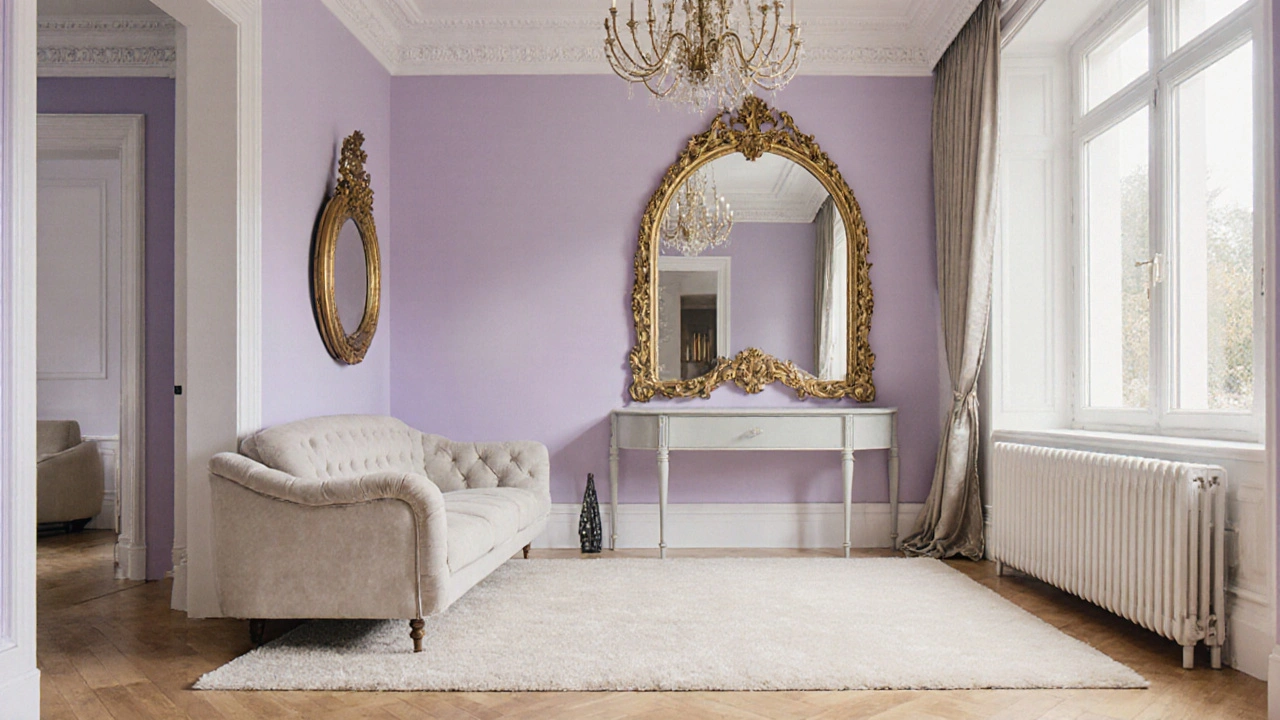
Why Rococo Was a Revolution in Ideas
Beyond its pretty surfaces, Rococo reflected a shift in how people thought about art and daily life.
- From public to private: The style moved the focus from grand public ceremonies to private salons where individuals could enjoy art in an intimate setting.
- Celebration of pleasure: In a time when enlightenment ideas were spreading, Rococo embraced the notion that beauty and enjoyment were worthy goals.
- Gender dynamics: Many Rococo interiors were designed for women, providing spaces to host tea parties, music, and conversation - a subtle rebalancing of social power.
- Cross‑cultural exchange: The fascination with Chinoiserie introduced European audiences to Asian motifs, laying groundwork for future global design dialogues.
These intellectual currents helped pave the way for the later Enlightenment emphasis on reason and the French Revolution’s breaking of old hierarchies.
Rococo’s Legacy: Modern Echoes
Even after the style fell out of favor in the late 18th century, its DNA persists.
- Contemporary interior designers often use pastel palettes and curvy furniture to create “soft modern” looks that echo Rococo without the heavy ornamentation.
- Fashion houses tap into Rococo motifs-think floral brocades and lace trims-in runway collections, especially during spring shows.
- Popular culture references, from Disney’s “Beauty and the Beast” ballroom to the opulent sets of period dramas, lean on Rococo aesthetics to convey luxury and romance.
Spotting these nods is easier when you know the signature elements.
Key Takeaways
- Rococo emerged in early 18th‑century France as a light, curvy alternative to the heavy Baroque.
- Its visual language relies on pastel colors, asymmetrical curves, gilded details, and playful subjects.
- Major figures include François Boucher, Jean‑Honoré Fragonard, Johann Balthasar Neumann, and patron Marie Antoinette.
- Rococo reshaped ideas about private pleasure, gendered spaces, and cross‑cultural design.
- Today’s interior trends, fashion, and media still borrow from Rococo’s soft elegance.
Frequently Asked Questions
What time period does Rococo cover?
Rococo flourished roughly between 1720 and 1780, peaking in France before spreading to Germany, Austria, and Italy.
How can I tell if a room is Rococo?
Look for curved moldings, pastel walls, gilded mirrors, and ceiling frescoes with mythic or pastoral scenes. Furniture will often have cabriole legs and upholstery in silk or satin.
Why did Rococo fall out of favor?
The rise of Neoclassicism, driven by Enlightenment ideals of rationality and the political turmoil of the French Revolution, painted Rococo’s carefree opulence as out‑of‑step with the new age.
Can I incorporate Rococo elements into a modern home?
Yes-mix pastel accent walls, curvy lighting fixtures, or a gilded mirror with contemporary furniture. The trick is to keep the overall feel airy and avoid over‑loading the space.
Where can I see original Rococo artworks?
Major collections include the Louvre (Paris), the Wallace Collection (London), and the Kunsthistorisches Museum (Vienna). Many palaces, like the Würzburg Residence, open for guided tours showcasing intact interiors.

